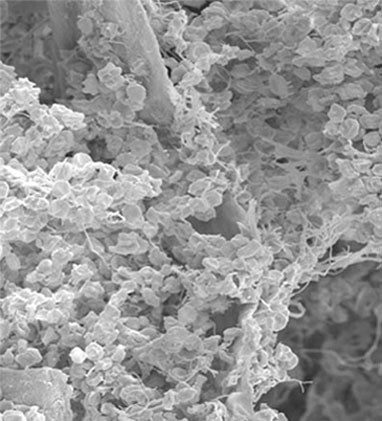Ension Reinforced Collagen MatrixThe biological and architectural characteristics of native collagen make it an ideal regenerative scaffold since it exhibits cell attachment motifs and growth signals. Ension has developed specific processing and crosslinking technologies to maintain collagen’s native triple helix conformation, bioactivity and control its mechanical properties. Ension’s Reinforced Collagen Matrix (ERCM) is designed to withstand in vivo enzymatic degradation and maintain its load bearing features that make it ideal for hernia and wound healing applications.
The porous, open architecture of ERCM facilitates cellular colonization.
|
Polypropylene hernia mesh with a regenerative collagen surface to promote tissue ingrowth and regeneration. Regenerative SurfaceCellular ingrowth and vascularization of implanted scaffolds can be improved by designing a collagen interface to increase cytocompatibility and accelerate tissue colonization. Specific processing and fabrication technology ensures the maintenance of collagen’s bioactivity and native triple helix conformation. The collagen interface’s natural molecular and architectural characteristics are designed to mitigate the healing response and prevent the chronic pain associated with the foreign body response. Specifically designed collagen interfaces covalently immobilized onto the surfaces of medical devices can be used to tailor protein adsorption and ultimately determine the lifecycle of devices in contact with bodily fluids or implanted in the body. The collagen interface is processed to ensure an anti-inflammatory response and the exhibition of specific cell attachment motifs that promote natural tissue healing rather than the typical chronic foreign body encapsulation. |



